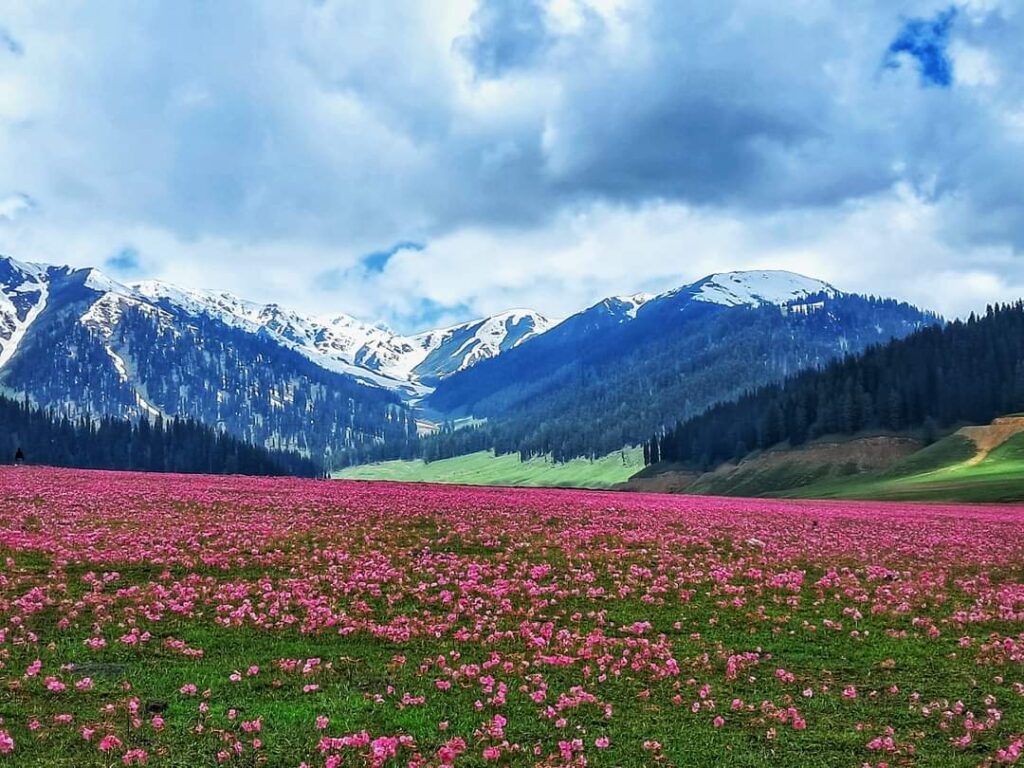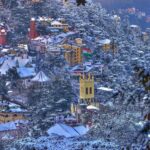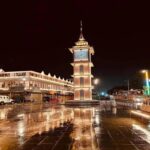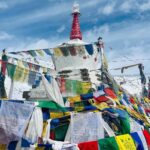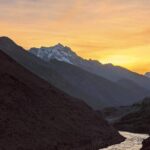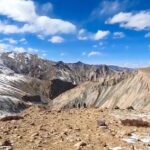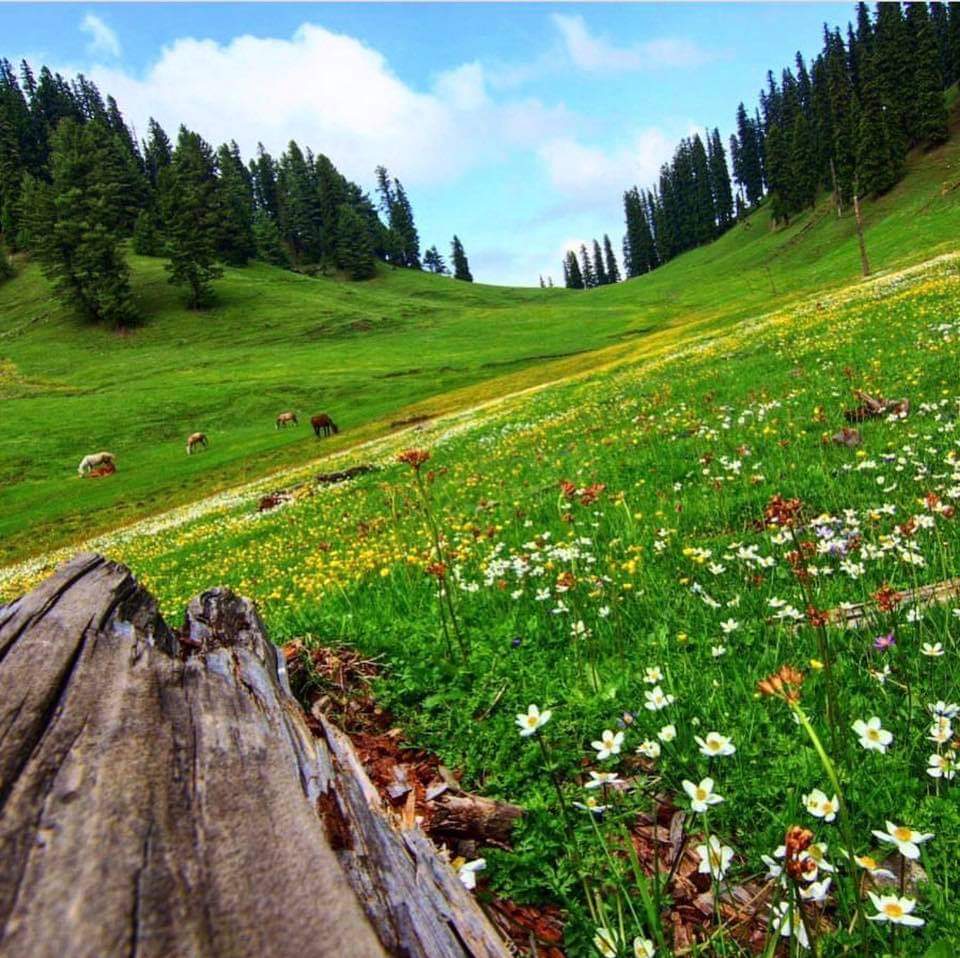
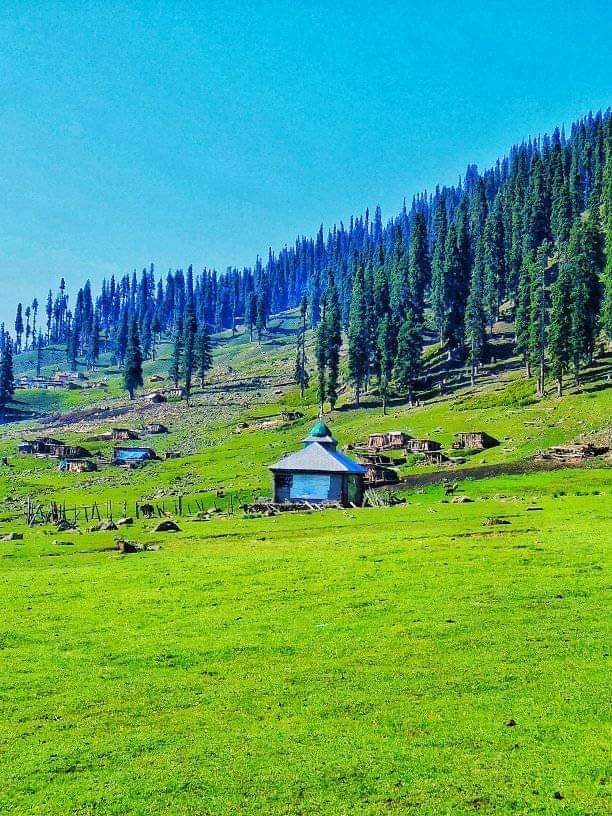
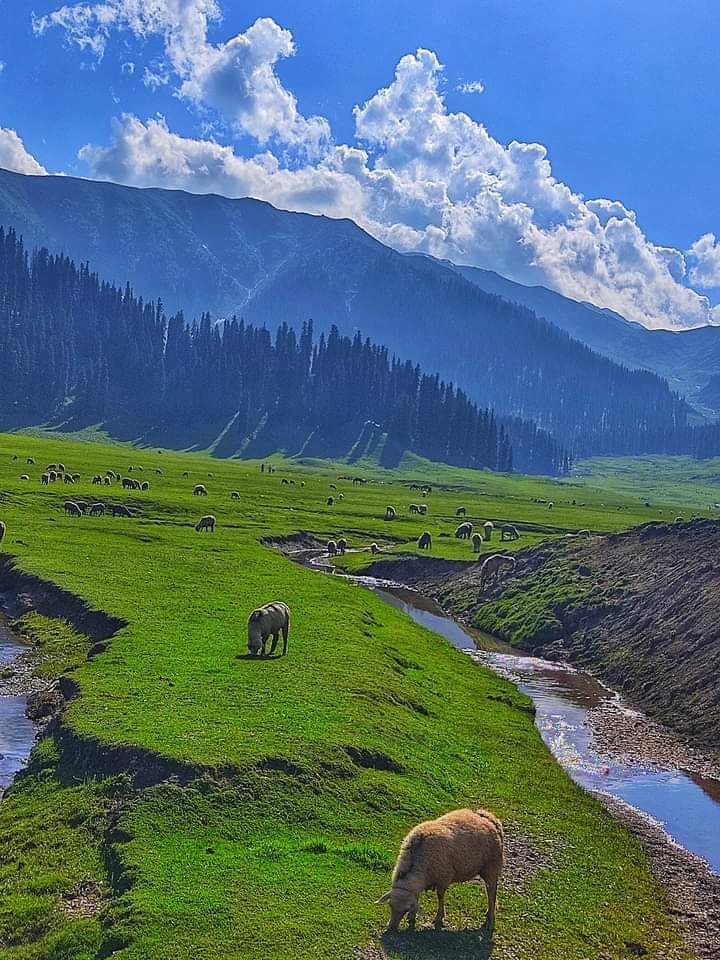
Bangus Valley
Bangus Valley, also known as Bungus Valley, is a hidden gem located in the Kupwara district of Jammu and Kashmir. It is situated at an altitude of around 10,000 feet above sea level, and is surrounded by snow-capped mountains, lush green forests, and crystal clear streams.
The valley is home to a variety of wildlife, including the Himalayan tahr, the snow leopard, and the golden eagle. It is also a popular destination for adventure activities such as trekking, camping, and fishing.
Bangus Valley is also known for its rich culture and history. The valley is home to a number of different ethnic groups, including the Gujjars, the Bakarwals, and the Gaddi. Each group has its own unique culture and traditions.
There are a number of historical monuments and ruins found in the valley, including the remains of an ancient fort and a mosque.
Bangus Valley is a truly unique and special place. It is a place where visitors can experience the natural beauty of the Himalayas, the rich culture of the people of Jammu and Kashmir, and the excitement of adventure activities.
How to reach bangus valley
Bangus Valley is a remote destination in the Himalayas, so it is important to plan your travel carefully. There are a few different ways to reach Bangus Valley:
By air: The nearest airport to Bangus Valley is Srinagar International Airport (SXR), which is located about 100 kilometers away. From Srinagar, you can take a taxi or bus to Bangus Valley. The journey takes about 3-4 hours.
By road: Bangus Valley is well connected by road to major cities in Jammu and Kashmir such as Srinagar, Jammu, and Anantnag. You can take a taxi or bus from any of these cities to Bangus Valley. The journey takes about 3-4 hours.
By train: The nearest railway station to Bangus Valley is Banihal Railway Station / Baramullah Railway Station, which is located about 50 kilometers away. From Banihal, you can take a taxi or bus to Bangus Valley. The journey takes about 1-2 hours.
History
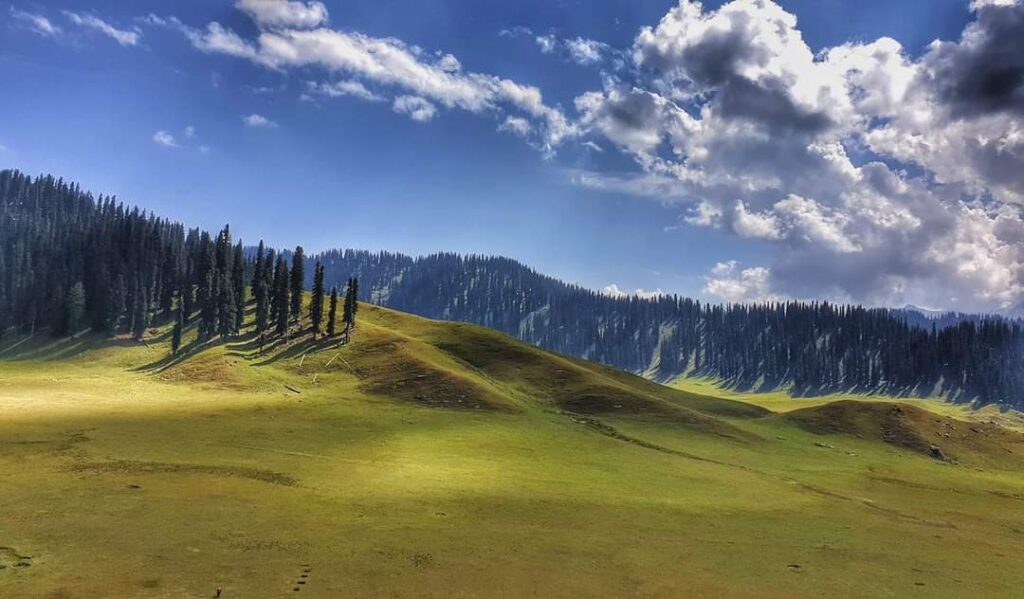
The history of Bangus Valley dates back centuries. It is believed that the valley was once inhabited by the Dards, an ancient people who lived in the Himalayas. The Dards were skilled traders, and Bangus Valley was an important trade route between India and Central Asia.
In the 11th century, Bangus Valley was conquered by the Kashmiri king, Lalityaditya Muktapida. He built a number of forts and temples in the valley, including the ruins of a fort that can still be seen today.
During the Mughal period, Bangus Valley was a popular destination for hunting and recreation. The Mughal emperor, Jahangir, is said to have visited the valley on several occasions.
In the 19th century, Bangus Valley became part of the British Empire. The British built a number of roads and bridges in the valley, which made it easier to access.
After India gained independence in 1947, Bangus Valley became part of the state of Jammu and Kashmir. The valley has been affected by the ongoing conflict in Kashmir, but it is slowly becoming a popular tourist destination.
Bangus Valley as a trade route
Bangus Valley was once an important trade route between India and Central Asia. Traders from India would bring goods such as spices, textiles, and precious metals to Bangus Valley. From there, the goods would be transported to Central Asia and beyond.
The trade route through Bangus Valley was also used by pilgrims and travelers. Many people from India would travel to Central Asia to visit holy sites such as Samarkand and Bukhara. They would often pass through Bangus Valley on their way there.
The trade route through Bangus Valley was closed in the 19th century due to the conflict in Kashmir. However, it is hoped that the route could be reopened in the future, which would boost tourism and economic development in the valley.
Culture of the people of Bangus Valley
Bangus Valley is home to a number of different ethnic groups, including the Gujjars, the Bakarwals, and the Gaddi. Each group has its own unique culture and traditions.
The Gujjars are a nomadic people who are known for their pastoral lifestyle. They journey from one location to another in pursuit of suitable grazing grounds for their cattle. The Gujjars have a rich tradition of music and dance.
The Bakarwals are another nomadic people who are known for their pastoral lifestyle. They are closely related to the Gujjars, but they have their own unique culture and traditions. The Bakarwals are known for their skilled craftsmanship, and they produce a variety of handicrafts, including carpets, shawls, and bags.
The Gaddi are a semi-nomadic people who are known for their sheep rearing. They spend the summer months in the high altitude meadows of Bangus Valley, and the winter months in the lower valleys. The Gaddi have a rich tradition of folk music and dance.
The people of Bangus Valley are known for their hospitality and warmth. They are also known for their strong sense of community and their deep connection to nature.
The people of Bangus Valley have a rich tradition of music and dance. They often sing and dance at festivals and celebrations. The valley is also home to a number of traditional crafts, such as carpet weaving and shawl making.
The people of Bangus Valley are also very religious. The majority of the population is Muslim, but there is also a small Hindu minority. The people of the valley celebrate a number of Muslim and Hindu festivals throughout the year.
Why visit Bangus Valley?
Natural beauty: Bangus Valley is one of the most beautiful places in the Himalayas. It is known for its snow-capped mountains, lush green forests, and crystal clear streams.
Adventure activities: It is a popular destination for adventure activities such as trekking, camping, and fishing. There are a number of different trekking trails available, ranging from easy to challenging.
Culture: It is home to a number of different ethnic groups, each with its own unique culture and traditions. Visitors can experience the local culture by visiting homes, attending festivals, and trying traditional cuisine.
History: Bangus Valley has a rich history dating back centuries. At one point in history, it served as a significant trade pathway connecting India to Central Asia. There are a number of historical monuments and ruins found in the valley.
Tips for visiting Bangus Valley
Plan your trip ahead of time: It can be a challenging place to visit, especially during the winter months. It is important to plan your trip ahead of time and make sure that you are prepared for all types of weather conditions.
Hire a local guide: A local guide can help you plan your trip and make sure that you are safe while exploring the valley. They can also help you learn more about the local culture and history.
Pack for all types of weather: The weather in Bangus Valley can change quickly, so it is important to pack for all types of weather conditions. Be sure to pack warm clothes, even during the summer months.
Bring plenty of water and snacks: There are limited facilities available in Bangus Valley, so it is important to bring plenty of water and snacks with you.
Be respectful of the environment: It is a fragile ecosystem. Kindly show reverence for the natural surroundings and ensure there are no traces of your presence.
Be prepared for a basic lifestyle: It is a remote destination, so you should be prepared for a basic lifestyle. There are limited electricity and internet facilities available.
Be aware of the altitude: It is located at a high altitude, so it is important to be aware of the symptoms of altitude sickness. Take it easy on your first day in the valley and drink plenty of fluids.
Be respectful of the local culture: It is home to a number of different ethnic groups, each with its own unique culture. Be sure to dress respectfully and avoid taking photos of people without their permission.
Be prepared for adventure: It is a great place to experience adventure sports such as trekking, camping, and fishing. If you are planning on participating in any adventure activities, be sure to hire a qualified guide and pack the necessary equipment.
Conclusion
Bangus Valley is a hidden gem in the Himalayas, known for its breathtaking natural beauty, rich culture, and adventure activities. The valley is home to snow-capped mountains, lush green forests, crystal clear streams, cascading waterfalls, and a variety of wildlife. It is also home to a number of different ethnic groups, each with its own unique culture and traditions.
It is a great place to experience the best of the Himalayas. Whether you are looking for a relaxing vacation in a beautiful setting or an adrenaline-fueled adventure, Bangus Valley has something to offer everyone.
It is one of the most beautiful places in the Himalayas. It is home to snow-capped mountains, lush green forests, crystal clear streams, and cascading waterfalls.
It is home to a number of different ethnic groups, each with its own unique culture and traditions. Visitors can experience the local culture by visiting homes, attending festivals, and trying traditional cuisine.
Bangus Valley is a popular destination for adventure activities such as trekking, camping, and fishing. There are a number of different trekking trails available, ranging from easy to challenging.
It has a rich history dating back centuries.At one point in history, it served as a significant trade corridor connecting India to Central Asia. There are a number of historical monuments and ruins found in the valley.
Discover the Magic of Kashmir’s Natural Beauty in Our New Blog – An Adventure You Can’t Miss! Gulmarg , Dal Lake , tulip garden , Phhalgam kashmir , Sonmarg kashmir
